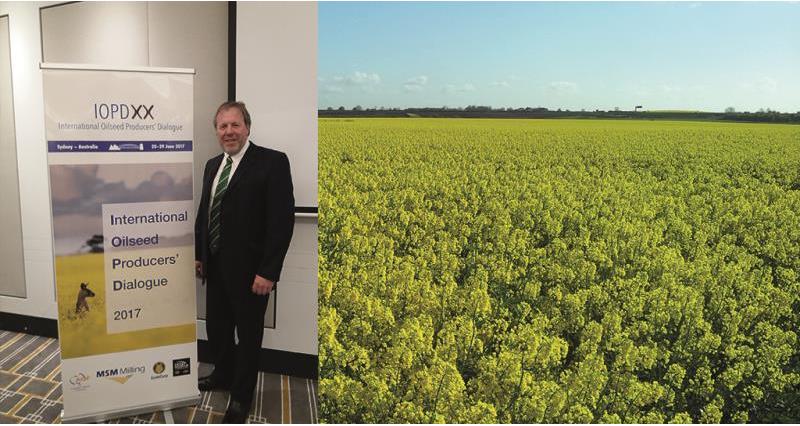No one could have predicted at the last conference in June 2016 that by the time we met a year later the world would be such a different place. The UK has voted to leave the EU, Donald Trump is President of the United States and Emmanuel Macron is the new French President. When faced with such uncertainty the opportunity to meet with and exchange views with fellow farmers from across the globe is even more important.
The conference brings together farming organisations from all the major oilseed producing nations and this year we joined representatives from Brazil, Paraguay, Canada, Australia, USA, France and Germany to discuss areas of common interest in the oilseed supply chain.
So how do countries compete? There are many different avenues. We were reminded that Ukraine was a strong competitor with its increased production and its now preferential access to EU cereals markets. Then on the other hand, we were given the example of the New Zealand dairy industry that underwent revolution by taking 85% of dairy producers into one company, turning competition policy on its head.
But we must understand our markets. Countries that form the Association of Southeast Asian Nations have grown significantly their imports of Australian grain and oilseeds as they diversify against the growing Chinese market and find alternate routes into the country.
You have to understand the market – we know that shoppers in Asia value secure traceability but will the Chinese ‘get healthy’ and suddenly eat less sugar and red meat? These are important trends to understand.
As always, technology and innovation was a big ticket item at the meetings. New breeding techniques and plant breeding innovation have the potential to speed up plant breeding, which could mean genetic solutions to farmers’ problems.
However, the global debate on how this would work hangs over the development of new varieties. It seems that Governments of each of the eight countries present were taking a slightly different approach to the regulation.
For big exporters, like the US and Canada, how these regulations work globally is crucial as even a slight difference can cause huge trade disruptions. As a result of the standstill, no commercial company is researching or developing new varieties as they understandably don’t want to develop a product not acceptable to the market.
This is ultimately hampering innovation and non-European colleagues were nervous to hear how political and emotional the debate had become in Brussels.
It was clear that it is in the farmers’ best interest for a global, harmonised solution to be found sooner, rather than later.
Our crops team will have more later this week as they report back from Australian farms.
